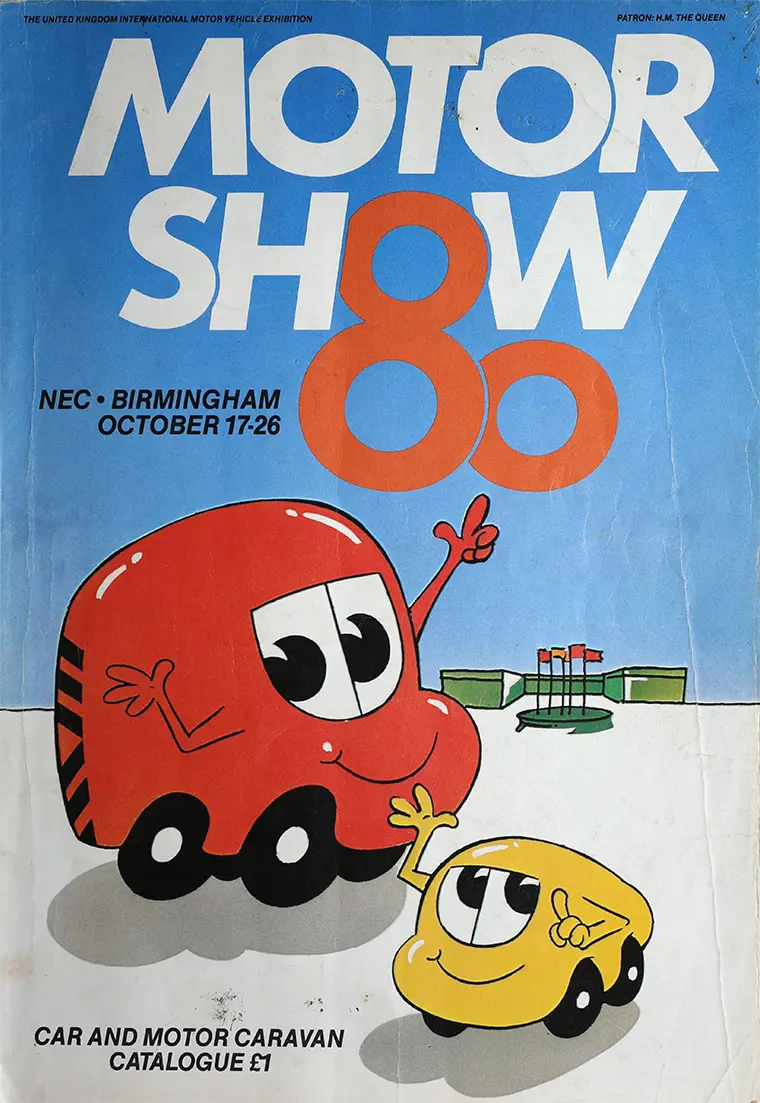MEMORIES OF MY FIRST NEC MOTOR SHOW
26 October 2022
It is Saturday 18th October 1980. My family have just arrived at Southampton Central Station for the long train journey to Birmingham International – and my first Motor Show at the NEC. We – or rather my mother - had decided the 142-mile trip was best undertaken by train due to genuine concerns that our car was not the ideal form of transport. The prospect of the M27 and the A34 in autumn in an eight-year-old Citroën Dyane 6 with a heater best described as "erratic" and a fabric sunroof admitting jets of freezing air did not prove entirely attractive.
I can remember little about that journey as the focus of my ten-year-old self was seeing three new models that I avidly read about in Motor and Car. Would they live up to my expectations? Would they attract vast crowds? And most importantly, would there be plenty of brochures to add to my collections? Meanwhile, the rest of my family had already adopted the long-suffering expression of people about to embark on a very long day indeed.
The first cars on my list were the Silver Spirit and the Silver Spur. Even at that tender age, I knew one of my humble background (think Hancock's Half Hour meets Ever Decreasing Circles) had no chance of admittance to the stand. But to see the new generation of Rolls-Royces was privilege enough, for they had even more presence than the outgoing Silver Shadow.
Next was the new third-generation Ford Escort, and I do recall how its styling genuinely impressed me. For many years the Mk. III was such a familiar sight that it is too easy to forget the impact of that 'Aeroback' bodywork. So naturally, the flagship Ghia was the star attraction, even if £5,033 for the five-door version represented a century of pocket money.
The final vehicle on my shortlist was, of course, the Austin Mini Metro. In 1980, any ten-year-old with an interest in cars could not fail to be aware of its importance not just to BL but to the British motor industry per se. Pundits noted the development costs amounted to £275m while various comedians still made "Leyland Jokes". Should the Metro fail, there was a sense that it would mark the end for the state-owned conglomerate.
In other words, few new models in 1980 had such a weight of expectation, and I do recall some difficulty in actually seeing a Metro on the Leyland display, such were the crowds. Eventually, I was able to subject the "British Car To Beat The World" to my utterly inexpert appraisal, and I concluded that a 1.3S in metallic silver (and 'go-faster' stripes) was the must-have hatchback for fashionable circles. N.B. The reader should bear in mind that my definition of "fashionable" was anyone who owned a Soda Stream and a video recorder.
Looking at reports of the Show reminds me that I was very taken with the Fiat Panda, the Renault Fuego and the Mercedes-Benz W126. I also greatly desired to see a Talbot Tagora SX as its trip computer represented high technology. Other cars made less of an impact, and I cannot recall seeing a Vauxhall Viceroy or the latest Mazda 323. However, fleeting impressions of the now almost-forgotten Honda Quintet remain in my mind. On seeing it, I could not decide whether it most resembled a five-door Civic or a scaled-down Accord.
Finally, it was time to leave, not least because I was now laden with two carrier bags filled with brochures. Plus, my family was suggesting if we did not depart very soon, they would abandon me on the FSO stand. The train journey home involved a less-delightful change at Reading, but at least the Dyane started the first time on arrival. Wielding the starting handle on a freezing night would not have improved the overall mood.
And so, when I attend the Lancaster Insurance Classic Motor Show, I will be looking for any of those models that made such an impression on my younger self. Plus, as a mark of how time passes, we are remote from 1980, as the new cars of 1938 were from my first visit to the NEC…
